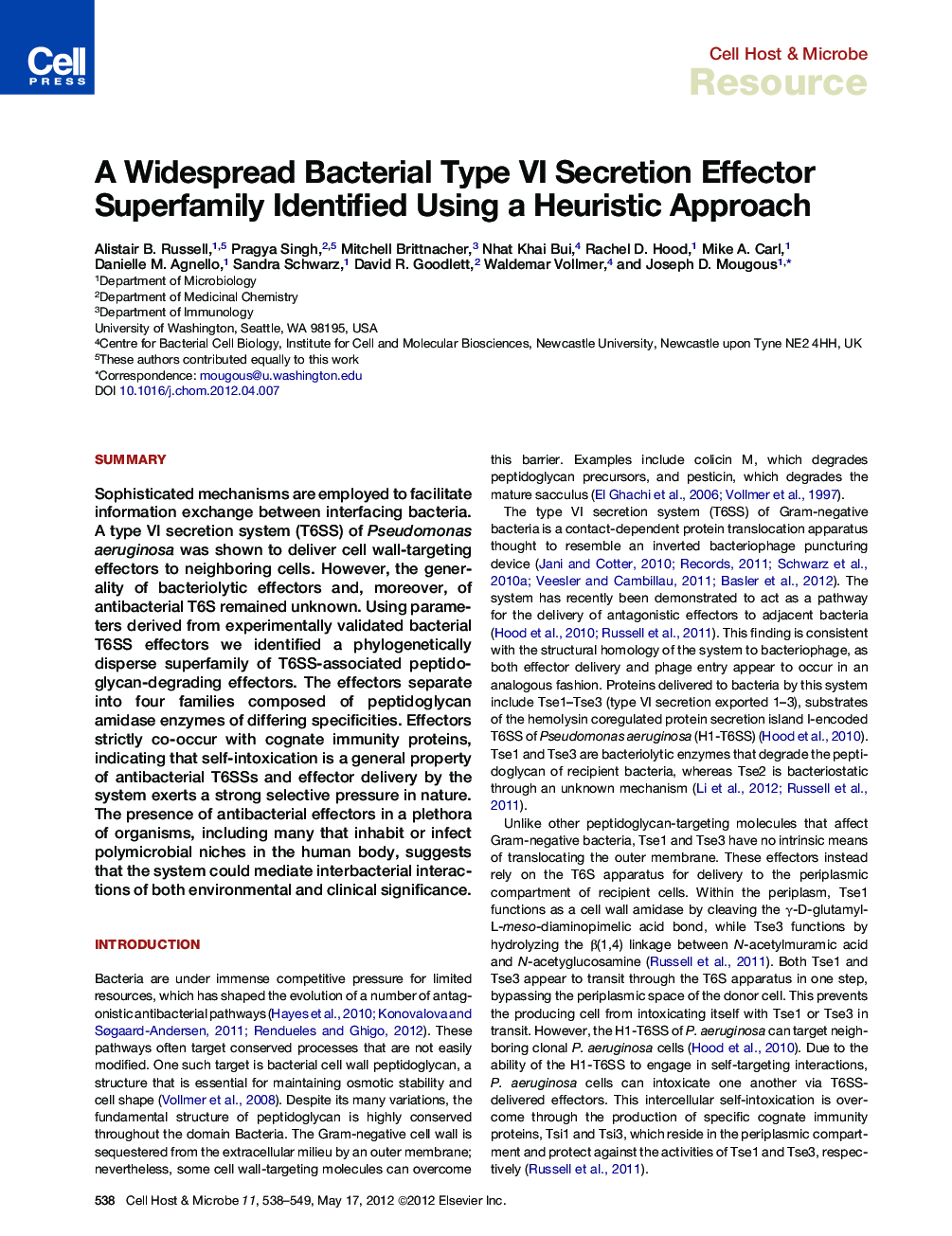| کد مقاله | کد نشریه | سال انتشار | مقاله انگلیسی | نسخه تمام متن |
|---|---|---|---|---|
| 4361228 | 1301362 | 2012 | 12 صفحه PDF | دانلود رایگان |

SummarySophisticated mechanisms are employed to facilitate information exchange between interfacing bacteria. A type VI secretion system (T6SS) of Pseudomonas aeruginosa was shown to deliver cell wall-targeting effectors to neighboring cells. However, the generality of bacteriolytic effectors and, moreover, of antibacterial T6S remained unknown. Using parameters derived from experimentally validated bacterial T6SS effectors we identified a phylogenetically disperse superfamily of T6SS-associated peptidoglycan-degrading effectors. The effectors separate into four families composed of peptidoglycan amidase enzymes of differing specificities. Effectors strictly co-occur with cognate immunity proteins, indicating that self-intoxication is a general property of antibacterial T6SSs and effector delivery by the system exerts a strong selective pressure in nature. The presence of antibacterial effectors in a plethora of organisms, including many that inhabit or infect polymicrobial niches in the human body, suggests that the system could mediate interbacterial interactions of both environmental and clinical significance.
► Mass spectrometry defines several antibacterial T6SS substrates
► T6SS substrates from disparate species reveal an effector-immunity paradigm
► Informatic analysis based on shared properties defines a large T6S effector family
► Effector-immunity distribution indicates a broad role for T6SS in bacterial interactions
Journal: - Volume 11, Issue 5, 17 May 2012, Pages 538–549